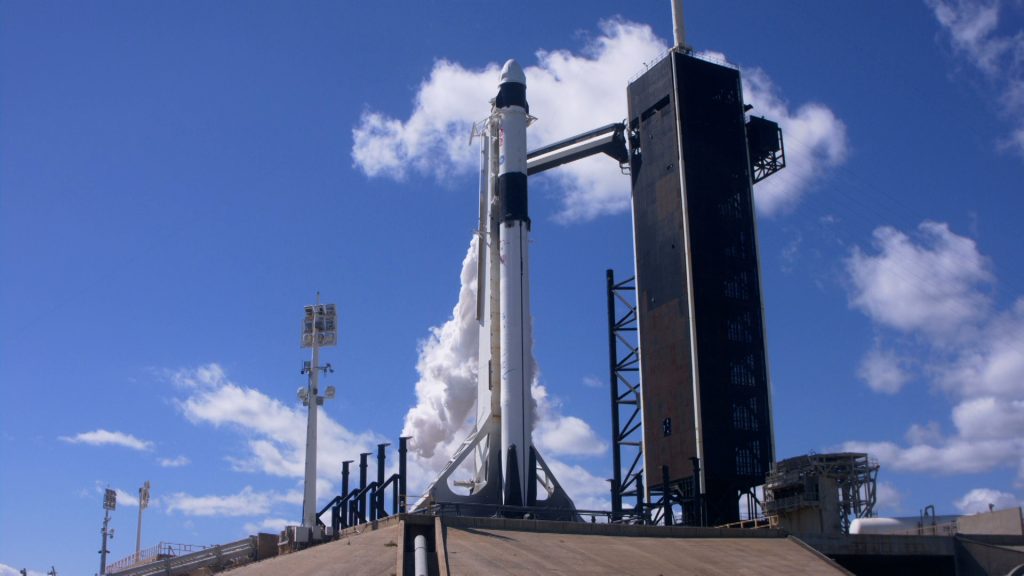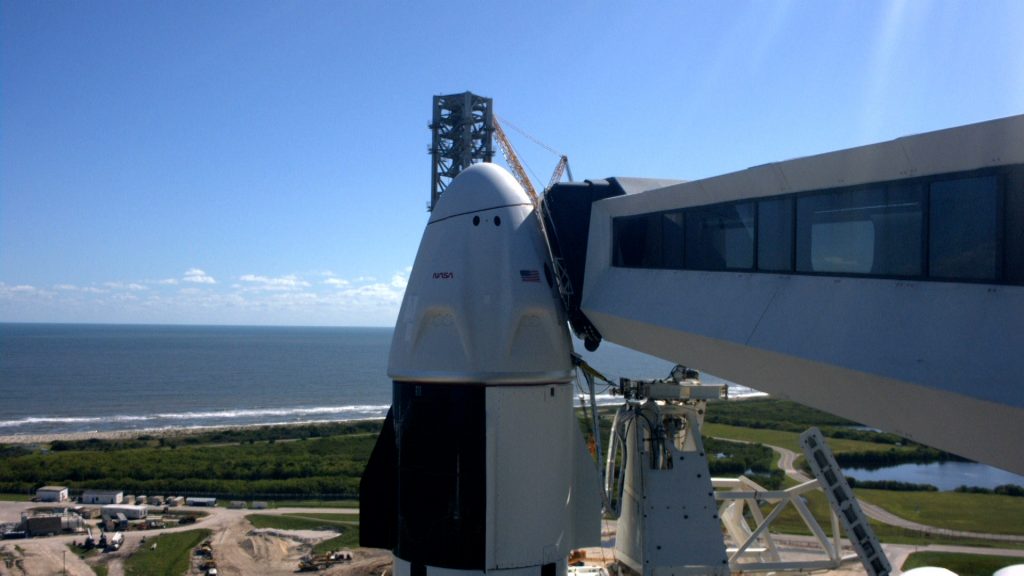The positive call came in from Crew-5 Commander Nicole Mann that trajectory is nominal. The first stage has started its descent.
Tag: Kennedy Space Center
First Stage Main Engine Cutoff, First and Second Stages Separate
The rocket has reached first stage main engine cutoff (MECO). The first and second stages have separated.
Rocket Reaches Max Q
Max Q, or the moment of peak mechanical stress on the rocket, has been reached.
Liftoff! Crew-5 Flight Crew Soars into the Florida Afternoon Sky


The Falcon 9 rocket and Crew Dragon Endurance spacecraft roared off of Launch Pad 39A at NASA’s Kennedy Space Center in Florida! Nicole Aunapu Mann, Josh Cassada, Koichi Wakata, and Anna Kikina have successfully begun their approximate 29-hour journey to the International Space Station on NASA’s SpaceX Crew-5 mission.
Max Q will happen during the next minute.
Crew-5 in Terminal Count, Ready for Launch from NASA’s Kennedy Space Center

The RP-1 rocket fuel load is complete.
Just a few minutes until liftoff, and all looks good for the Crew-5 launch!
Crew-5 Remains on Schedule, Launch About 15 Minutes Away
Fuel loading is complete on the second stage, and liquid oxygen loading has begun. Everything remains on target for the noon EDT launch of NASA’s SpaceX Crew-5 mission from Kennedy Space Center’s Launch Complex 39A in Florida.
Weather conditions remain extremely favorable.
Propellant and Liquid Oxygen Loading Underway
Right on schedule – at T-minus 35 minutes – RP-1 (rocket grade kerosene) loading and first stage liquid oxygen loading has begun.
Liftoff, from NASA’s Kennedy Space Center in Florida, is at noon EDT today.
Endurance Launch Escape System Armed
The launch escape system for the Dragon spacecraft, named Endurance, is now armed. From liftoff until they reach orbit – roughly 12 minutes – the crew would be able to escape safely in the unlikely event of an anomaly.
Up next is propellant loading.
Crew Access Arm Retracted for NASA’s SpaceX Crew-5 Launch

The crew access arm has retracted. Coming up shortly, the Dragon launch escape system will be armed.
For continuous coverage of NASA’s SpaceX Crew-5 launch to the International Space Station, stay here on blog, visit the commercial crew blog, @commercial_crew on Twitter, or commercial crew on Facebook. There also is a continuous live broadcast on NASA Television and the agency’s website.
Dragon Spacecraft Endurance is ‘Go’ for Launch

Confirmation was received from Commander Nicole Aunapu Mann that SpaceX’s Dragon Endurance spacecraft is ‘Go’ for launch! Weather looks good and we remain on target for a noon EDT launch today.
In about 45 minutes, the SpaceX Falcon 9 rocket, with Endurance atop, will lift off from Kennedy Space Center’s Launch Complex 39A in Florida for NASA’s Space X Crew-5 mission.
The mission is the fifth crew rotation flight of a Dragon spacecraft, carrying NASA astronauts Nicole Aunapu Mann and Josh Cassada, who will serve as spacecraft commander and pilot, respectively, and JAXA (Japan Aerospace Exploration Agency) astronaut Koichi Wakata and Roscosmos cosmonaut Anna Kikina, who will serve as mission specialists.
The crew will dock Endurance to the forward port on the Harmony module of the International Space Station about 29 hours after liftoff. Dragon is scheduled to dock to the space station at 4:57 p.m. Thursday, Oct. 6.
Later this month, the four SpaceX Crew-4 astronauts currently on the space station will enter the Dragon Freedom spacecraft and undock from Harmony’s space-facing port for a parachute-assisted splashdown off the coast of Florida. Freedom Commander Kjell Lindgren, Pilot Bob Hines, with Mission Specialists Jessica Watkins and Samantha Cristoforetti, have been living and working on the orbital lab as Expedition 67 Flight Engineers since April 27.
Crew-5 is scheduled for a long duration stay of up to six months aboard the space station conducting science and maintenance before returning to Earth in the spring of 2023.
